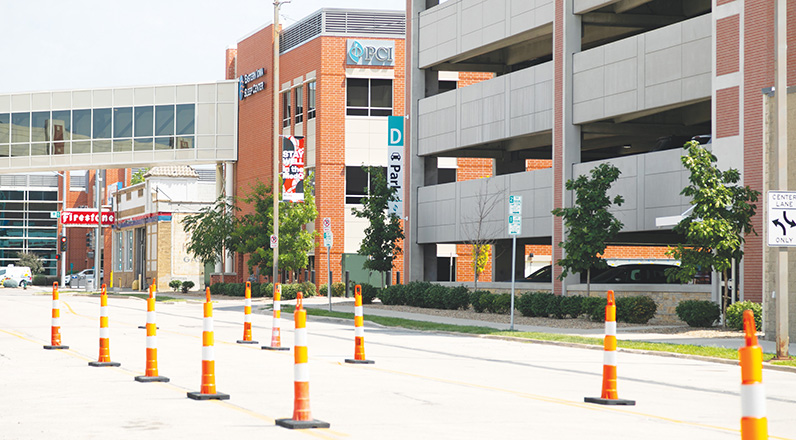
This street next to Physicians' Clinic of Iowa is one of the many that are undergoing construction for better navigability and safety as part of improvements spearheaded by the MedQuarter Regional Medical District. Physicians' Clinic of Iowa, Mercy Cedar Rapids and UnityPoint Health — St. Luke's Hospital are Cedar Rapids' three major health care providers, and all three support the MedQ.
CEDAR RAPIDS, Iowa — When the three major health care players here joined the city of Cedar Rapids around 2011 to back the creation of a self-taxing medical tax district, they were saying to property owners that it would be worthwhile to pay an added tax because it would spur the type of local improvement that no one organization could achieve on its own.
About a decade since the establishment of the MedQuarter Regional Medical District, those providers say it has enabled the 55-block quadrant of Cedar Rapids to achieve a significant level of community and economic development.
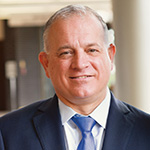
Dr. Timothy Quinn is president and CEO of Mercy Cedar Rapids. He says the district is and will continue to be "something greater than what it was before."
He says in the past in the district, "it was complicated to get around. Now it is easier. We've enhanced and highlighted the main thoroughfares. Now, there is clearer navigation and wayfinding. There are visible improvements, safer crosswalks, and more people are out walking."
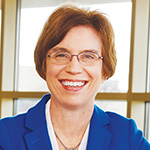
Michelle Niermann was UnityPoint Health — Cedar Rapids president and CEO from 2019 until this summer, when she became chief operating officer for the UnityPoint Health East Division. The changes in the district, she says, have been "transformative. It looks fantastic and it's wonderful to have this portion of the city look that way, it enhances people's confidence and comfort being here."
Lifting all boats
Phil Wasta is a Cedar Rapids native and executive director since 2015 of MedQuarter, also known as MedQ. He says the district came about as a result of a 2007 city master plan to build upon the success of a self-supporting
municipal improvement district, or SSMID, that led to significant enhancements in downtown Cedar Rapids several years prior. Iowa state law allows for the creation of these defined areas within a city, where properties are assessed an added tax to
fund community improvements.
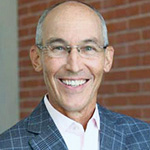
While a devastating 2008 flood delayed the city's work on advocating for a SSMID for the medical community, the next year city leaders began to solicit that support from Cedar Rapids' three major health care providers and the businesses that would be taxed to support the district. The three are the 424-bed Mercy, the 532-bed UnityPoint Health — St. Luke's Hospital — Cedar Rapids, and the Physicians' Clinic of Iowa specialty care network.
Gaining business owners' buy-in was difficult because it meant a tax hike, says Wasta, who then co-owned a business within the proposed district. But he and other proposal backers successfully rallied businesses and others behind the idea that "a rising tide lifts all boats," he says. In 2011, the city council approved the MedQ.
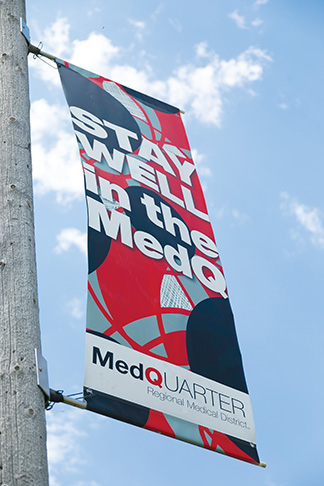
Niermann, who is a 30-year resident of Cedar Rapids, says the MedQ came about in large part because of the strong vision and focus on collaboration of the executives who headed Mercy and St. Luke's. Mercy's top executive at the time was Tim Charles, and UnityPoint Health — Cedar Rapids' was Ted Townsend.
Medical destination
The MedQ includes the two hospitals, the stand-alone specialty clinic and some independent health care facilities. More than 500 physicians, surgeons, dentists, optometrists and mid-level providers and thousands
of additional staff work at those facilities. Also in the district are more than 50 other stores, restaurants and offices; multiple churches and civic organizations; and some residential properties.
Only the for-profit businesses are taxed — the rate of the MedQ added tax varies annually but currently is $2.75 per $1,000 of assessed value of property. While the hospitals are nonprofit, they have agreed to an annual voluntary contribution of $100,000 apiece. The latest annual budget of the MedQ was $570,000.
A 12-member commission governs the MedQ. That commission includes top executives of the three anchor health care providers, as well as leaders of other medical facilities and businesses in the district.
The uses of MedQ's revenue include incentivizing investment in the area, building awareness regionally of the district as a recognized medical destination, coordinating the collaboration of the medical providers, promoting workforce development, bolstering the surrounding community, improving the area's safety and security, beautifying the area, and supporting local businesses and organizations.
Planters and paint
Some of the most visible evidence of the MedQ's work is the ubiquitous branded street signs and wayfinding posts. Also, the MedQ has worked hand in hand with the city to beef up and enforce building codes that promote
an appealing aesthetic districtwide. And MedQ and the city are working together to redesign and in some cases rebuild the major thoroughfares of the district. For instance, 10th Street, which runs from Mercy, past Physicians' Clinic of Iowa to St.
Luke's, was designed to include new turning lanes and to have pedestrian crosswalks where people used to just run across the street like they were playing the video game Frogger, says Wasta. MedQ worked with the city to bury electrical wires and to
replace wooden light posts with metal ones.
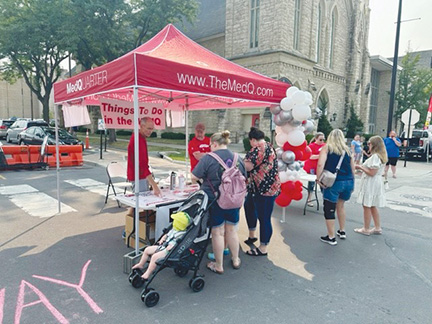
MedQ installed and maintains flower planters in the district, and set out new trash receptacles, including solar-powered compactors that ping workers when they are full. MedQ purchased small tracts of land to create several "pocket parks," or small green spaces with landscaping and places to sit and enjoy nature.
MedQ offers grants to businesses and others for façade improvements. Numerous restaurants within the district have gotten a facelift, as did a museum in a historic home.
MedQ also has been developing promotional brochures, a website and other marketing materials. And it has been organizing and promoting events to engage employees of the medical facilities and community businesses.
A 'unicorn'
Michelle Jensen is a MedQ commission member and a former MedQ chair. She is president and CEO of CarePro Health Services, a group of businesses providing home care. CarePro is based in the district. She and Wasta say that
the Cedar Rapids MedQ is somewhat of a "unicorn." They say there are many tax improvement districts for civic purposes — like the Cedar Rapids downtown SSMID and a Czech Village New Bohemia SSMID formed in Cedar Rapids after the MedQ. And, there are
improvement blocs centered around stand-alone medical facilities, such as at the Mayo Clinic in Minnesota. But they know of no district like MedQ that is anchored by a group of competing health care providers and that is self-funded.
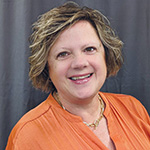
Being a unicorn presents challenges, say Jensen and Wasta, in that there are no established protocols to follow. For instance, while the downtown SSMID is aiming to attract new large businesses and cultivate an active social scene, MedQ does not have enough vacant property to attract big companies, and its base of clinician employees does not have much time outside of work to socialize in the MedQ.
But, say Jensen and Wasta, the collaborative spirit engendered by the MedQ has had many benefits. For instance, they believe it eased communications and cooperation among providers in their response to COVID and in their recovery from a 2020 derecho — a severe, destructive windstorm.
A MedQ brochure says there has been tens of millions of dollars of new development, many new businesses locating there and an increase in the taxable value of the district.
Niermann says such improvements are helping the district's "big three" employers to take on what is the most pressing challenge of the day in health care — worker recruitment and retention. She says the changes made through the medical district "make it an attractor for the people who come here for care, the people who work here and the people who live here."
